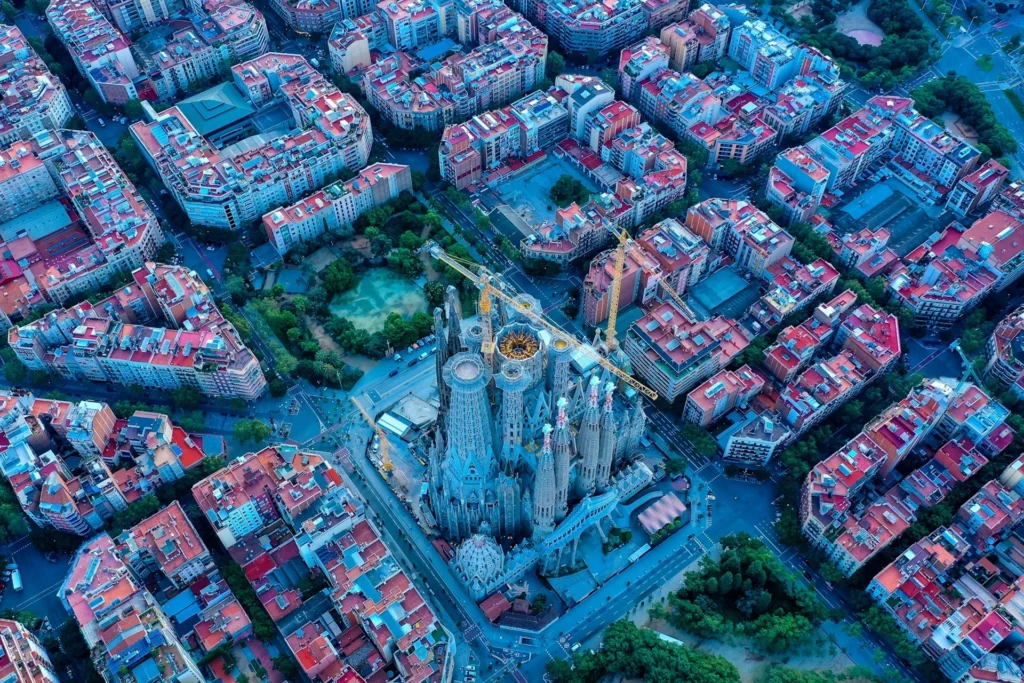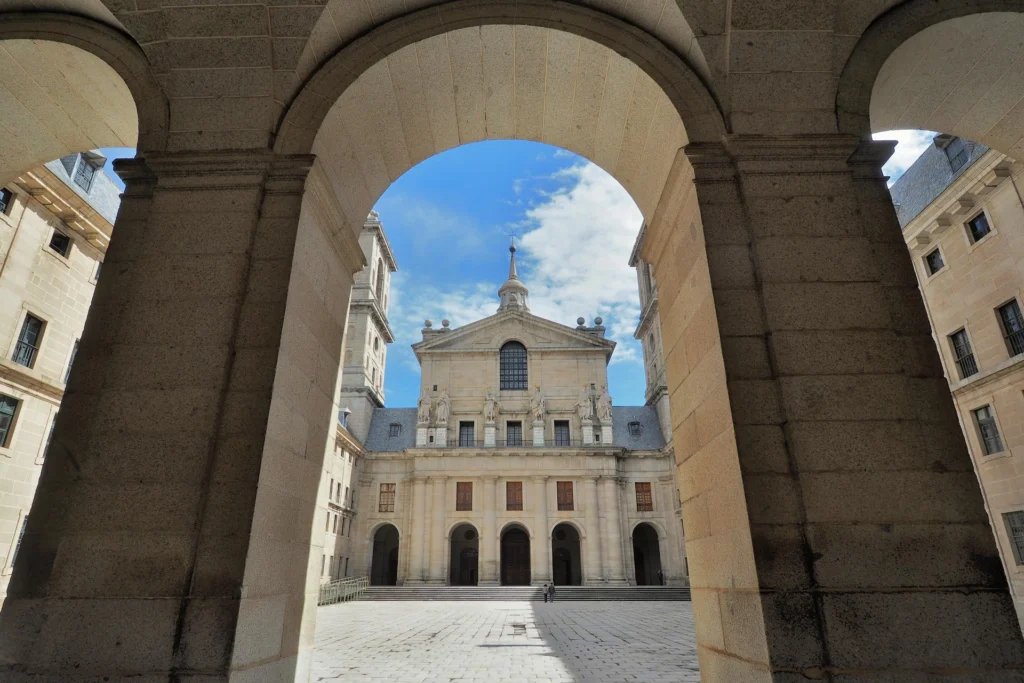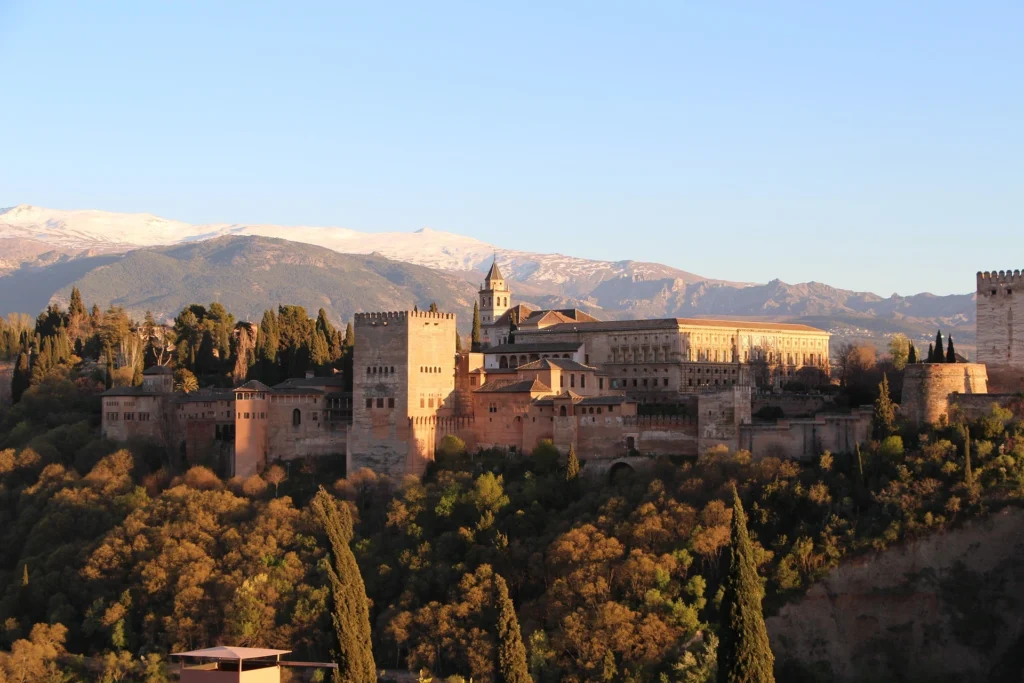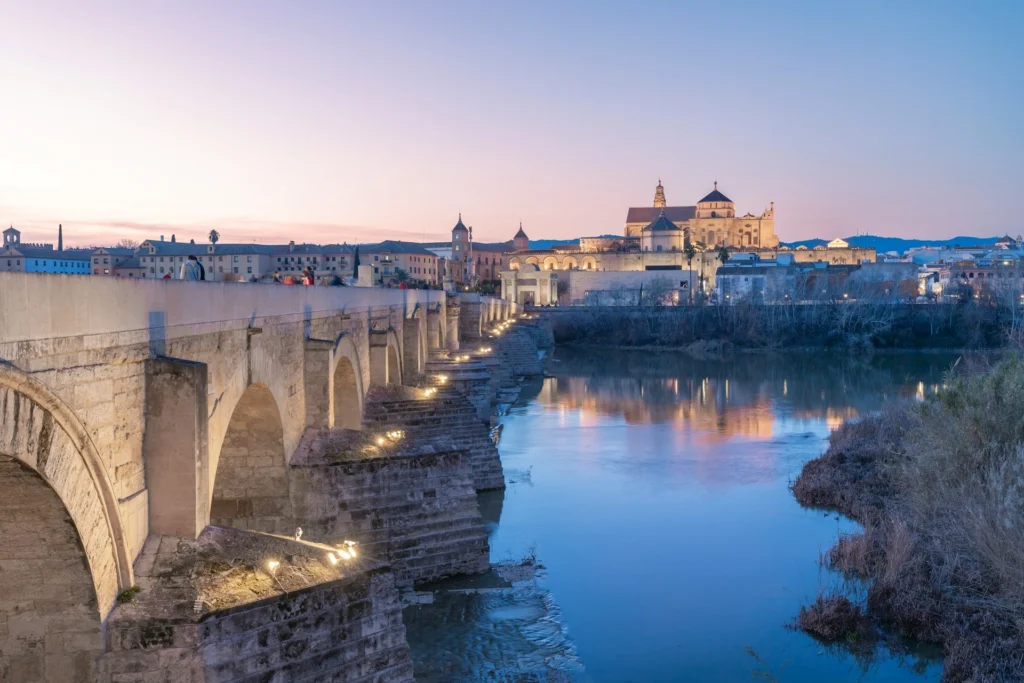
Sagrada Familia
Planning to visit the stunning Sagrada Família in Barcelona? On this page, you’ll find the best tickets, insider tips, and all the info you need to plan your visit.
Official tickets Sagrada Familia
Sells out fast | Free cancellation
Basilica Sagrada Familia in Barcelona – Just a short metro ride from the heart of Barcelona, the Sagrada Família is one of the most awe-inspiring architectural wonders in the world. A unique blend of faith, design, and history, it offers a captivating day trip for anyone interested in art, spirituality, or the genius of Antoni Gaudí—set against the vibrant energy of Catalonia’s capital.
The History of the Sagrada Família
In the bustling Eixample district of Barcelona stands one of the world’s most iconic—and still unfinished—landmarks: the Basílica de la Sagrada Família. Construction began in 1882 under architect Francisco de Paula del Villar, but it was Antoni Gaudí, the Catalan visionary, who transformed the project into the extraordinary basilica we see rising today.
Gaudí took over the project in 1883, devoting the last 15 years of his life entirely to its construction. Deeply religious, he saw the church not only as a place of worship but also as a testament to the divine through nature-inspired architecture. Gaudí died tragically in 1926, with less than a quarter of the building completed.
Despite wars, funding struggles, and ongoing debates about preserving Gaudí’s vision, work has continued. The basilica is now nearing its final phase. Today, the Sagrada Família remains a living monument—part historical site, part working construction zone, and a symbol of human aspiration and faith.
Architecture and Layout
The architecture of the Sagrada Família is a breathtaking fusion of spiritual vision and natural inspiration. Antoni Gaudí reimagined the traditional basilica as a living structure, drawing on organic forms and sacred geometry to create something entirely unique. Each of the basilica’s façades tells a different part of the Christian story—the joyful Nativity Façade teeming with detail and life, and the stark, angular Passion Façade evoking sorrow and sacrifice.
Inside, the space opens like a forest, with towering columns branching overhead and stained glass windows casting shifting patterns of light and color. Gaudí’s design avoids straight lines, favoring curves and geometric innovation to achieve a sense of harmony and movement. Every element—from the smallest carving to the grandest vault—serves a symbolic and structural purpose. It blends engineering with spiritual expression. Even under continued construction, the Sagrada Família feels whole, a testament to Gaudí’s belief that architecture should reflect both nature and the divine.
Art and Symbolism in the Sagrada Família
Every element of the Sagrada Família is symbolic. Gaudí believed that architecture should serve both aesthetics and morality, and his work is full of religious, mathematical, and natural motifs. Snails, leaves, fruits, and even reptiles are carved into stone, representing the interconnectedness of creation.
Sculptures by artists such as Josep Maria Subirachs and Etsuro Sotoo add dramatic texture, especially on the Passion Façade. Subirachs’ angular, modernist style contrasts with Gaudí’s softer forms, sparking dialogue about continuity versus innovation in sacred art.
Richly detailed, the interior reveals a space alive with symbolism and reverence. Interplay of light and sound within the cavernous nave evokes a sacred grove or temple. Beneath a canopy of vines and stars, the altar draws the eye upward toward the apse and the rising central tower.
Official tickets Sagrada Familia
Sells out fast | Free cancellation
Practical Information for Visitors
The Sagrada Família is one of the most visited monuments in Spain, so planning ahead is essential. The basilica is open daily year-round, though hours vary seasonally—generally from 9:00 AM to 8:00 PM in summer and until 6:00 PM in winter.
Online booking is strongly recommended, both for ease and to secure a preferred entry time. You can choose between a basic entry ticket, access with audio guide, or guided tours with expert commentary on the history and architecture.
Metro Line 2 and Line 5 stop right at Sagrada Família station, making the church easily accessible from anywhere in Barcelona. Buses and taxis also serve the area frequently.
Allow at least 1.5 to 2 hours for your visit, longer if you plan to visit the museum or ascend one of the towers for panoramic views of the city and sea.
The Surrounding Eixample District
While the basilica is the focal point, the surrounding neighborhood—L’Eixample—is a destination in itself. Designed in a grid layout by Ildefons Cerdà, it features wide boulevards, modernist buildings, cafés, and boutiques. Stroll down Avinguda Gaudí, a charming pedestrian avenue lined with shops and restaurants, or visit the nearby Hospital de Sant Pau, another UNESCO-listed modernist masterpiece.
For a quiet retreat, Plaça de Gaudí and Plaça de la Sagrada Família offer green spaces with views of the basilica’s façades—perfect for a peaceful break or a picnic.
Nature and Walking in the Area
Though set in the city, the Sagrada Família area invites exploration on foot. From here, it’s an easy walk or short metro ride to Passeig de Gràcia, where you can admire other Gaudí masterpieces like Casa Batlló and La Pedrera. For panoramic views and greenery, head north to Park Güell, Gaudí’s whimsical park full of mosaics, terraces, and meandering paths.
If you’re interested in Gaudí’s full legacy, consider following the Ruta del Modernisme, a self-guided tour through Barcelona’s architectural gems, many of which were shaped by Gaudí and his contemporaries.
Tips for a Great Visit
To avoid the biggest crowds, visit early in the morning or later in the afternoon. Weekdays are generally less busy than weekends. Wear comfortable shoes—the basilica’s floors and stairs require some walking, especially if you choose to visit the towers.
Photography is allowed, but flash and tripods are not. For the best photos, natural light in the late morning or golden hour offers incredible hues through the stained-glass windows.
Don’t skip the museum, located beneath the Passion Façade. It offers models, photos, and Gaudí’s original plans, giving you a deeper appreciation of the immense challenge and creativity behind this project.
Official tickets Sagrada Familia
Sells out fast | Free cancellation
Dining and Accommodations
There are countless restaurants and cafés near the basilica, ranging from Catalan taverns to trendy brunch spots. Try local favorites like pa amb tomàquet (bread with tomato), botifarra (Catalan sausage), or seafood fideuà. For a sweet treat, churros with chocolate or a scoop of turrón-flavored gelato is hard to beat.
Barcelona offers accommodations for every taste—from boutique hotels with views of the basilica to charming B&Bs and stylish apartments. For those wanting a unique stay, several hotels in Eixample offer rooftop terraces with spectacular nighttime views of the illuminated towers.
The Sagrada Família as UNESCO World Heritage
In 2005, the Nativity Façade and the crypt of the Sagrada Família were declared UNESCO World Heritage Sites, in recognition of Gaudí’s visionary genius. This designation affirms the basilica’s significance not only to Spain but to the entire world as a cultural and architectural milestone.
Even as it nears completion—scheduled around 2026, the centenary of Gaudí’s death—the Sagrada Família remains a living project. The blend of traditional craftsmanship with cutting-edge design techniques ensures it will continue inspiring awe for generations.
Why the Sagrada Família Should Be on Your Itinerary
The Sagrada Família isn’t just another cathedral—it’s a testament to human creativity, perseverance, and faith. Whether you’re passionate about architecture, spirituality, or simply looking to be amazed, the basilica offers something truly unforgettable.
It is a place where art and engineering meet the divine, where light transforms stone, and where the city’s heartbeat can be felt in every sculpture and spire.
A visit to the Sagrada Família is more than a sightseeing stop—it’s a spiritual and cultural encounter with one of the greatest minds in history. Don’t leave Barcelona without experiencing it.
Official tickets Sagrada Familia
Sells out fast | Free cancellation
How do you get to the Sagrada Família from central Barcelona?
Take the metro Line 2 or Line 5 directly to Sagrada Família station. You’ll exit right in front of the basilica.
Can you visit the towers?
Yes, with a separate ticket. Choose either the Nativity or Passion Tower. An elevator takes you up, but the descent is via narrow spiral stairs.
Is it best purchase Sagrada Familia tickets in advance?
Absolutely. Online tickets help you skip long queues and guarantee entry at your preferred time. Only a limited number of visitors are allowed to enter each day.
Is the Sagrada Família open year-round?
Yes, it’s open daily except for a few holidays (such as Christmas Day and New Year’s). Opening hours vary seasonally.
Is Sagrada Familia family-friendly?
Very much so. The architecture fascinates children, and audio guides are available in kid-friendly formats. There are also nearby playgrounds and parks.
Is there a dress code at the Sagrada Familia?
Modest attire is recommended since it’s a place of worship. Shoulders and knees should be covered. Comfortable shoes are also a must.
Official tickets Sagrada Familia
Sells out fast | Free cancellation
Attractions Near the Sagrada Família
The Sagrada Família is surrounded by several must-see attractions within easy walking distance. Just a 7-minute stroll away, you’ll find the stunning Sant Pau Art Nouveau Site. A 15–20 minute walk down the elegant Passeig de Gràcia brings you to Gaudí’s other masterpieces—Casa Milà (La Pedrera) and Casa Batlló. Park Güell, the iconic mosaic park, is also close by—just a 30-minute walk or a short bus ride. With so many cultural highlights nearby, the Sagrada Família is the perfect starting point for exploring Barcelona’s architectural wonders.
Curious to discover more about Barcelona? | Head over to our main page about the city.


